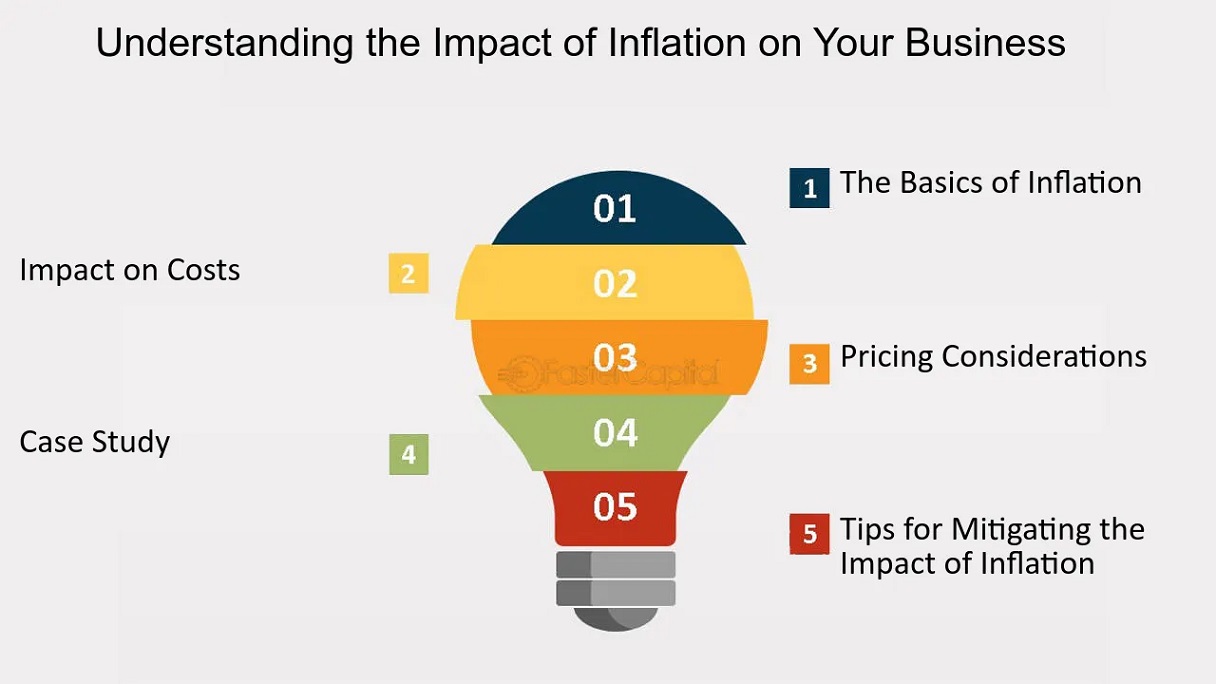Introduction
Inflation is one of the most critical economic factors that influence businesses, consumers, and financial markets. It affects pricing, operational costs, and profitability, making it essential for businesses to develop strategies to mitigate its impact. In this guide, we’ll explore how inflation affects businesses, the challenges it presents, and ways to navigate inflationary pressures.
What is Inflation?
- Definition: Inflation refers to the rise in prices of goods and services over time, leading to a decrease in the purchasing power of money.
- Causes of Inflation:
- Demand-Pull Inflation: When demand exceeds supply, causing prices to rise.
- Cost-Push Inflation: Increased production costs, such as wages and raw materials, push prices higher.
- Monetary Inflation: Excessive money supply in the economy leading to devaluation.
How Inflation Affects Businesses
1. Increased Production Costs
- Higher costs for raw materials, labor, and utilities.
- Businesses may pass costs onto consumers through price hikes.
2. Reduced Consumer Purchasing Power
- Consumers buy less due to higher prices.
- Decline in demand affects revenue and profitability.
3. Higher Interest Rates
- Central banks raise interest rates to control inflation.
- Businesses face higher borrowing costs for expansion and operations.
4. Shrinking Profit Margins
- Increased costs without proportionate price increases lower profit margins.
- Businesses must find ways to cut costs or improve efficiency.
5. Supply Chain Disruptions
- Inflation raises transportation and logistics costs.
- Delays in supply chain increase operational difficulties.
6. Wage Pressures
- Employees demand higher wages to keep up with inflation.
- Companies struggle to balance payroll expenses with profitability.
7. Changing Consumer Behavior
- Shift in spending patterns towards essential goods.
- Luxury and non-essential businesses experience a downturn.
Strategies for Businesses to Manage Inflation
1. Pricing Strategies
- Implement gradual price increases instead of sudden hikes.
- Offer value-based pricing rather than cost-plus pricing.
2. Cost-Cutting Measures
- Optimize supply chain efficiency.
- Reduce overhead expenses without sacrificing quality.
3. Investing in Automation & Technology
- Use AI and automation to reduce labor costs.
- Improve operational efficiency to mitigate inflationary effects.
4. Diversifying Revenue Streams
- Expand product offerings to reduce dependency on inflation-affected sectors.
- Explore digital revenue sources such as online subscriptions or e-commerce.
5. Strengthening Supplier Relationships
- Negotiate better long-term contracts to lock in favorable pricing.
- Work with multiple suppliers to avoid supply chain disruptions.
6. Hedging Against Inflation
- Invest in assets that appreciate in value, such as real estate or commodities.
- Consider financial instruments like inflation-protected securities.
7. Improving Employee Retention
- Offer non-monetary benefits like remote work, training programs, and workplace flexibility.
- Reduce hiring and training costs by maintaining a stable workforce.
Industries Most Affected by Inflation
| Industry | Impact Level | Key Challenges |
|---|---|---|
| Retail | High | Rising product costs, reduced consumer spending |
| Manufacturing | High | Increased raw material and transportation costs |
| Real Estate | Medium | Higher mortgage rates affecting property sales |
| Hospitality | High | Increased food, labor, and operational costs |
| Healthcare | Medium | Rising medical supply and wage costs |
Future Outlook: Inflation Trends
- Persistent Price Volatility: Inflation may remain high due to ongoing global economic uncertainties.
- Higher Interest Rates: Central banks may continue tightening monetary policies.
- Supply Chain Resilience: Companies will focus on strengthening supply networks.
- Adoption of Digital and AI Solutions: Businesses will increasingly use technology to optimize costs.
Conclusion
Inflation presents significant challenges for businesses, but proactive strategies can help mitigate its impact. By managing costs, optimizing pricing, and embracing technological advancements, businesses can navigate inflationary pressures and maintain long-term profitability.
